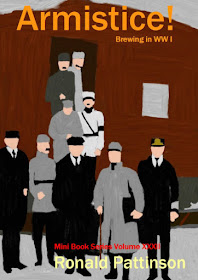It first appeared in the spring of 1918 under the name of Ale 4d. 4d (fourpence) being the price per pint. As you’d expect from a price-controlled beer during WW I, it wasn’t very strong, just 1025.6º. It was replaced Barclay Perkins Government Ale and for a while during 1918 and 1919 was the only Mild produced by Barclay Perkins, X Ale having been discontinued.
The biggest surprise is that, even after the return of full-strength Mild in the summer of 1919, Barclay Perkins continued to brew A. Though it quite small quantities. A typical parti-gyle in the early 1920s consisted of over 1,000 barrels of X and just 100-odd of A.
By the time WW II rolled around, nothing much had changed. A was still very much the junior partner in the parti-gyle, though by this point there were two other beers it was brewed with: X and XX.
During the mid-1930s there had been a variation on A called RA (Royal Ale), which seems to have been brewed for George V’s Jubilee in 1926. It was the same basic beer as A, but primed differently. It contained more and darker primings, leaving it a little stronger, and quite a bit darker, than plain old A.
| 1939 Barclay Perkins Ale | ||
| pale malt | 1.50 lb | 22.06% |
| mild malt | 2.50 lb | 36.76% |
| crystal malt 60 L | 0.50 lb | 7.35% |
| amber malt | 0.25 lb | 3.68% |
| flaked maize | 1.25 lb | 18.38% |
| No. 3 invert sugar | 0.75 lb | 11.03% |
| caramel 1000 SRM | 0.05 lb | 0.74% |
| Fuggles 150 mins | 0.50 oz | |
| Fuggles 60 mins | 0.50 oz | |
| Fuggles 30 mins | 0.25 oz | |
| OG | 1031.5 | |
| FG | 1007.5 | |
| ABV | 3.18 | |
| Apparent attenuation | 76.19% | |
| IBU | 18 | |
| SRM | 12.5 | |
| Mash at | 146º F | |
| After underlet | 154º F | |
| Sparge at | 170º F | |
| Boil time | 150 minutes | |
| pitching temp | 62º F | |
| Yeast | Wyeast 1099 Whitbread ale | |
















